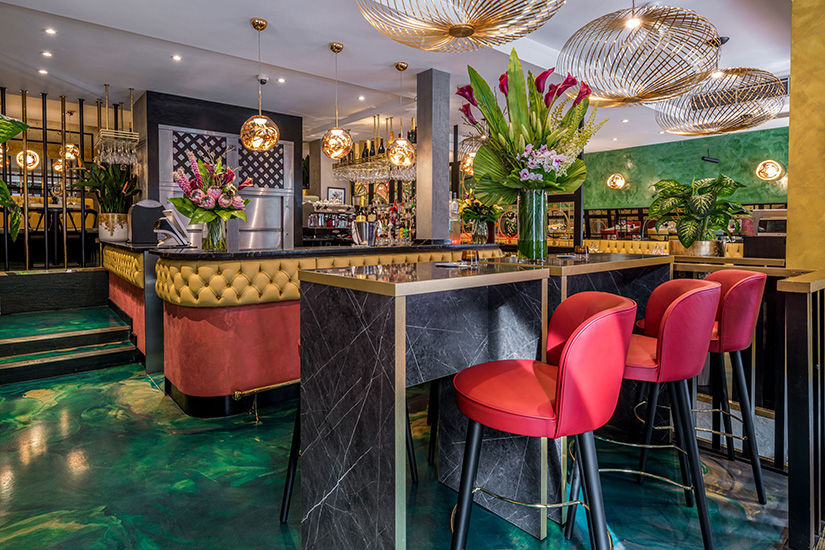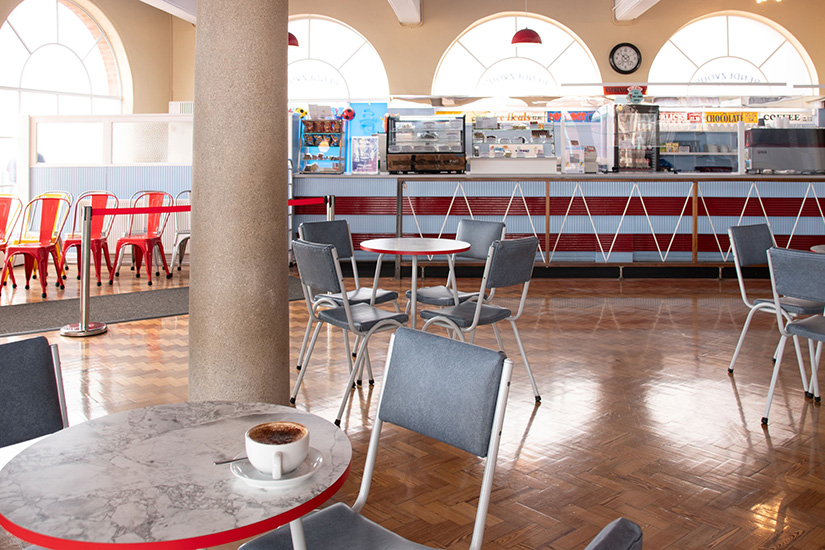The importance of pattern in commercial interior design
Ever since Jean Papillon created the first repeating design as a “paper tapestry” in 1675, interior designers have welcomed patterns into their schemes to add colour, warmth and visual interest.

Aqua Bar and Grill, Formica® Laminate in F9483 Ferro Grafite. Photography: Julian Franklin
Arguably a designer's most powerful tool, patterns have the ability to influence emotions and behaviour, eliciting feelings of comfort, exhilaration or even nostalgia. To mark the 110th anniversary of Formica® Brand patterns and the upcoming launch of the new Formica® Patterns Collection in Europe, we’re exploring the evolution of pattern in interior design and their continued importance in today’s commercial settings.
Pattern: a collaborative approach
The evolution of patterns for Formica® Laminate began in the 1950s with vibrant laminates gracing kitchens and diners. As tastes moved on so did Formica Group’s ambition, and the brand pursued collaborations with prestigious designers to develop patterns that would continue to capture the public's imagination.
“Pattern has always been really important to the brand. Our iconic Boomerang pattern, popular in the ‘50s, put Formica® Laminate on the map. Customers were starting to express themselves in a more flamboyant way at that time, so our patterns spoke to their needs.” Nina Bailey, Formica Group Europe’s Design Lead
Highlighting collaboration’s ongoing significance, Formica Group partnered with leading contemporary designer Jonathan Adler in 2015 and is soon to launch a terrazzo-style pattern in the latest collaboration with surface designer Olivia Aspinall.
Why is pattern such a vital part of interior design?
Whether a stripe, geometric or abstract design, patterns possess the power to infuse character into a space, fundamentally transforming its mood and atmosphere. A cosy banquette upholstered in a luxurious chevroned velvet, or a wall swathed in a forest-inspired pattern can temporarily transport the customer to a different world.
In commercial spaces, the incorporation of patterns and prints sparks visual excitement, fostering a unique identity that enhances the overall experience. Whether evoking nostalgia, drama, escapism, or fun, patterns contribute to a vibrant and memorable ambience.
Moreover, patterns can fulfil a functional role in commercial interiors where a specific action is required, for example, to encourage customers to move naturally through vast retail spaces or to mark the transition of the types of products on offer.

Rendezvous Café, Formica® Laminate in F1238 Carnaval and F3421 Bianca Luna
How maximalism heralded the rise of pattern in commercial spaces
Formica Group’s Nina Bailey also recognises the role the maximalist interior trend has played as the trope of bold colour and pattern made its move from the residential realm to commercial spaces:
“I’m seeing designers delve into the use of pattern much more in recent schemes seen in commercial interior design,” says Nina. “There’s more scope for maximalism as brands increasingly want to bring personality to a space to demonstrate their uniqueness via interior design.”
Pattern gives designers the chance to create a visual language that speaks directly to their target market. And in a post-pandemic world, the pressure is on the hospitality industry to create a memorable experience that will get customers off the sofa and back into their favourite bar or restaurant.
Add to that the social media factor, in which brands are often creating headline-grabbing interiors specifically for that ‘Instagram moment,’ it’s no wonder commercial spaces are becoming bigger and bolder by the day.
The new Formica® Patterns Collection launches soon and you have the exciting opportunity to take a sneak peek at what's to come in our video. Sign up to our newsletter to be the first to hear about new introductions being added to the range.



